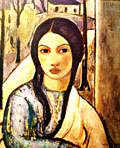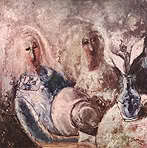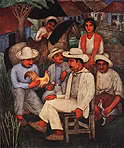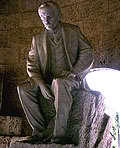GENERAL INFO:

Language: Spanish
Currency: Convertible Pesos (equivalent to the dollar). Other currency only for the locals : Cuban pesos with a value 24 times lower than the Convertible
Seasons and temperatures
- Winter-Spring:from December to April
- Summer and Autumn : from May to November
Air: In winter, temperatures vary widely but is unlikely to go below 15 degrees(Celsius) and getting to 30. In summer, from 28 to 38 degrees with very high humidity .
Water: Summer 30 degrees Winter 24 degrees (medium data)
Clothing: Tropical clothing. But always bring with you a waterproof jacket, a sweater and.... spray against mosquitoes.
Mobile Phones: signal is active almost all over the island but very expensive calls in both incoming/outgoing.
Driving: it is simple, rent a car is more expensive than average, we recommend careful on the roads at night due to lack of lighting and bad roads.
Locals: Very friendly and hospitable. But do not give too much confidence :-)
Safety: Crime is almost absent. As usually happens around the world : pay more attention in big cities.
Wind Statistics.
Wind is predominantly from ENE (East North East) during the year. So the coast of Cuba where you can kite with frequency is the north
In spring and autumn, with high pressure from the Atlantic, the wind is spread all over the island and can last several days, even a few weeks with intensity from 12 to 25 knots.
In Winter in conjunction with the frost from the United States, the wind blows strongly from the north by lowering the temperature usually on the first day of the cold front, creating waves that are maintained for a few days until wind gradually turn to the NNE to ENE. This especially in the West (Havana and vicinity).
In midsummer (July and August) the thermal wind blows in the early afternoon.
In west of the island with little intensity in the center and east of the island and several cays (Coco, Guillermo, Santa Maria) frequently reaches 15 knots or more.
Winds from the South are rare. Only a few days in spring with high winds.
With winds from the south on the north coast the only place where you can safely kite is Varadero because the peninsula allows you to kite with onshore winds in the inner lagoon.
Clothing in water:
- Lycra long sleeves most of the year (also for UVA sunlight)
- Short suit in winter
- For the few days of cold in late December-January-February to 3 mm long suit.
Kite equipment to take with you:
- In Winter: 12 to 7 meters. Better two sizes and also in case surfboard.
- In Summer from 13 to 11 meters.
Cuba
The word Cuba might mean land, in accordance with the indigenous origin of the term originally from the Arawakan language of the Taíno culture.
It could also mean cupola, according to new information provided by more recent studies, yet to be confirmed, in which a Hispanic-Arabic origin is attributed to the name of Cuba.
However, contemporary Cubans are not that concerned about these matters. They are, nevertheless, proud of their country and their idiosyncrasies, today a result of a cultural syncretism that also, and perhaps more than anything, entails the "Cuban essence."
Cuba - General data
- Name: Republic of Cuba
- Capital City: Havana
- Official language: Spanish
- Population (2005): 11.2 million inhabitants. Havana has 2.2 million inhabitants
- Ethnic composition: 65% whites, 24.9% mestizos (mixed), 10.1% blacks
- Area: 109 886 km2
- Length: 1 200 km
- Currency: Cuban Peso (MN) and Cuban Convertible Peso (CUC)
- Climate: Subtropical. Average summer temperature: 25°C (77°F). Average winter temperature: 22°C (72°F). Average relative humidity: 81%
- Flag: It was hoisted for the first time in 1859 in Cardenas City
- National anthem: The patriot Perucho Figueredo composed the music and wrote the lyrics in 1867
- National flower: Butterfly Jasmine
- National bird: Tocororo (Priotelus temnurus)
- National tree: Royal Palm
Cuban holidays
- January 1, Liberation Day, together with December 31 & January 2
- May 1, Labour Day
- July 26, National Rebelliousness Day, together with July 25 & 27
- October 10, Anniversary of the beginning of the 10 Years War in 1868
- December 25, Christmas Day
Cuba , officially Republic of Cuba, republic (2005 est. pop. 11,347,000), 42,804 sq mi (110,860 sq km), consisting of the island of Cuba and numerous adjacent islands, in the Caribbean Sea. Havana is the capital and largest city.
Land and People
Cuba is the largest and westernmost of the islands of the West Indies and lies strategically at the entrance to the Gulf of Mexico, with the western section only 90 mi (145 km) S of Key West, Fla. The south coast is washed by the Caribbean Sea, the north coast by the Atlantic Ocean and the Gulf of Mexico, and in the east the Windward Passage separates Cuba from Haiti. The shores are often marshy and are fringed by coral reefs and cays.
Geography
The largest island of the West Indies group (equal in area to Pennsylvania), Cuba is also the westernmost—just west of Hispaniola (Haiti and the Dominican Republic), and 90 mi (145 km) south of Key West, Fla., at the entrance to the Gulf of Mexico. The island is mountainous in the southeast and south-central area (Sierra Maestra). It is flat or rolling elsewhere. Cuba also includes numerous smaller islands, islets, and cays.
Government
Communist state.
History
Arawak (or Taino) Indians inhabiting Cuba when Columbus landed on the island in 1492 died from diseases brought by sailors and settlers. By 1511, Spaniards under Diego Velásquez had established settlements. Havana's superb harbor made it a common transit point to and from Spain.
In the early 1800s, Cuba's sugarcane industry boomed, requiring massive numbers of black slaves. A simmering independence movement turned into open warfare from 1867 to 1878. Slavery was abolished in 1886. In 1895, the poet José Marti led the struggle that finally ended Spanish rule, thanks largely to U.S. intervention in 1898 after the sinking of the battleship Maine in Havana harbor.
An 1899 treaty made Cuba an independent republic under U.S. protection. The U.S. occupation, which ended in 1902, suppressed yellow fever and brought large American investments. The 1901 Platt Amendment allowed the U.S. to intervene in Cuba's affairs, which it did four times from 1906 to 1920. Cuba terminated the amendment in 1934.
In 1933, a group of army officers, including army sergeant Fulgencio Batista, overthrew President Gerardo Machado. Batista became president in 1940, running a corrupt police state.
In 1956, Fidel Castro Ruz launched a revolution from his camp in the Sierra Maestra mountains. Castro's brother Raul and Ernesto (Ché) Guevara, an Argentine physician, were his top lieutenants. Many anti-Batista landowners supported the rebels. The U.S. ended military aid to Cuba in 1958, and on New Year's Day 1959, Batista fled into exile and Castro took over the government.
RELIGION
In addition to the worship of one God, named Olodumare, the Yoruba worship dozens of deities known as "Orishas" who are personified aspects of nature and spirit. The principal orishas include Eleggua, Oggun, Ochosi, Obatala, Yemaya, Oshun, Shango, Oya, Babalu Aiye, and Orula.
Orisha worship was spread to the new world through the slave trade. In order to preserve their religious traditions against Catholic repression, the African slaves syncretized the orishas with Catholic saints. Thus Shango came to be depicted as Sta. Barbara; Obatala as Our Lady of Mercy, etc. The religion took deep hold in African communities in Brazil and Cuba especially, and eventually spread to mixed race and European-American communities in these countries. After the Cuban revolution of 1959 the religion, known in Spanish as Santeria or La Regla de Ocha, spread to the United States (especially New York City and Florida), Puerto Rico and Venezuela.
Central features of the religion are its drumming and dancing celebrations known as tambors. At the tambors elaborate altars are created, and then food is offered to the Orishas. Depending on the nature of the celebration, percussionists and drummers (often playing the sacred 3-piece bata drums) play precise rhythms directed to specific Orishas while those present sing call-and-response songs in archaic Yoruba (called Lucumi in Cuba), causing the Orishas to descend and possess initiated priests and priestesses of the religion. The rhythms and forms of Yoruba religion are said to be fundamental to the development of many forms of African American music from gospel to blues and jazz, and to musical forms such as Salsa and Latin Jazz.
Some Geographic Features: Most of Cuba is covered with plains, but there are four important mountain groups: the Guaniguanico Range, in the center of the country; and, in the east, the Sagua-Baracoa and Sierra Maestra Mountains (17 of these peaks are more than 4265 feet (1300 meters) above the sea level; Turquino Peak is the highest, at 6476 feet (1974) above the sea level).
There are over 300 protected areas in the country, either on its insular shelf or on terra firma. They cover 22 persent of its total area.
UNESCO has declared six areas in Cuba to be preserves of the biosphere (the Guanahacabibes Peninsula, the Sierra del Rosario Mountains and the Zapata Peninsula, in the western part of the country; Buenavista, in the center; Alexander von Humboldt National Park and Baconao Park and the Cuchillas del Toa Mountains, in eastern Cuba).
Cuba Celebrations and Festivals
|
January
|
February
|
|
March
|
April
|
|
May
|
|
June
|
|
July
|
August
|
|
September
|
October
|
|
November
|
December
|
Of all expressions of Art, music is undoubtedly the one that has influenced more the personality of Cuban people. It is said that the island's inhabitants speak singing, dance while walking and woo with a love song. Music has developed fast and strong. The Habanera, rhythm born from the danza criolla and the contradanza, received its influence from the tango in Argentina and other rhythms of South America. Recent researches prove that in the contradanzas by Manuel Saumell, the tempo of the habaneras could be heard, for instance, in "La Tedesco", the first part is like the danzon, which appeared later; in many of his music scores, song and guajira were also outlined. Son and bolero arrived in Havana from the eastern provinces, specifically Santiago de Cuba. The bolero emerged at the beginning of this century with great composers such as, Alberto Villalon and Sindo Garay, influenced by Pepe Sanchez (who wrote the first one "Tristezas", in 1883). Though the songs of the old trova were boleros, best composers were Orlando de la Rosa and Isolina Carrillo who left one of the most sublime gifts of all times, the bolero "Dos Gardenias".
News about the son montuno dates back to the second half of the 19th century. In 1920 "Havana's Sextet " showed up at the high society salons in the capital. The "Matamoros trio ", started their long-lasting and important career in 1925 in Santiago de Cuba. They created some of the classic Cuban songs: Son de la loma, Mariposita de primavera y Lagrimas negras. Soon after, the first golden era of the son arrived and dozens of septets and sextets came forth, some of them began to make records with big North American companies. Arsenio Rodriguez, Miguelito Cuni, Felix Chapotin and Roberto Faz succeeded the first performers of son. Meanwhile, orchestras like "Arcaño y sus maravillas" and "La Sensacion" spirited balls in Havana playing danzones and charangas during the '40s and '50s. Enrique Jorrin composed first cha cha cha "La Engañadora" on 1950. Perez Prado made his first mambo on 1952. The second splendour of son took place in the '50s decade when a self-taught man from Cienfuegos turned up: Benny More, who, years later would be acclaimed "El Barbaro del Ritmo". This composer and singer revived the traditional ways of Cuban music, leading the son montuno to a concept of jazz band. The Cuban musician who had more influence on the process of evolution of Cuban and Caribbean music was Benny More. The "Van Van" orchestra of popular dancing music, with a very typical and modern sonority, was created in 1970. Year's later son offered its arrangements to the Salsa, which also incorporated Caribbean rhythms and sounds from the music of Latin (Cuban, Dominican and Puerto Rican) communities in New York. Cuban salsa, very well known today almost everywhere, reached its boom at the end of the '80s and beginnings of the '90s when orchestras like "Van Van" and "NG la Banda" grew solid and new, young orchestras like "El Medico de la Salsa", "Paulo FG y su elite" and "Isaac Delgado" came forth.
In the Late 90's and early 2000, Latin Music, who's roots lie primarily in Cuban rhythms, has met a massive revival worldwide with groups such as Ricky Martin, Christian and the Buena Vista social Club. This rivival outlines today's desires to return to the catchy rhythms and agreeable melodies foundered in Cuba and now playing worldwide at your local music store.
|
PAINTING is the most genuine expression of fine arts on the island. It could not develop in a coherent manner because its first expressions, made by the aborigines in the caves, were discontinued when those communities disappeared. With the conquest and evangelisation process a religious kind of painting prevailed, associated to catholic liturgy. Only in the 19th century, when the San Alejandro academy was founded (1818), paintings by natives began to flourish, designed to satisfy the European taste of Cuban bourgeoisie. The Economic Association Friends of the Country created the Academy and its first principal was French painter Jean Bautiste Vermay. By 1880 a new tendency in Cuban painting was born, its main subject was landscapes. Outstanding in this period were Esteban Chartrand and Valentin Sanz Carta. The works of Basque Victor Patricio de Landaluze showed an interesting folkloric style. But classicism still ruled in fine arts. The avant-gardist awakening of the '20s (20th century) initiated a new period for Cuban painting. The modern movement had its first and most important exhibit in 1927, sponsored by the magazine Avance. Eduardo Abela, Victor Manuel, Antonio Gattorno, Carlos Enriquez and others were starters of the vanguardist movement in Cuba. Following years were of consolidation of the modern movement; this was evidenced at the celebration of the First Modern Arts Salon on 1937. Then, young artists already showed a new period in Cuban art that would build up to create, the so-called "School of Havana" in 1940. Painters like Rene Portocarrero, Amelia Pelaez and Mariano Rodriguez are part of this movement. Wilfredo Lam returned to Cuba in 1942 after a long stay in Europe and a studio experience with Pablo Picasso. On 1943 Lam painted the work that immortalised him "The Jungle", which was acquired by New York's MOMA. With the triumph of the revolution, the artistic movement strengthened, since the foundation in 1962 of the National School of Fine Arts. Very important personalities such as Raul Martinez and Antonia Eiriz formed the body of professors. A few years later, in 1976, the Fine Arts College of the High Institute of Arts was founded. The important patrimony of the last decade gathers works of artists like Roberto Fabelo, Zaida del Rio, Tomas Sanchez, Manuel Mendive and Nelson Dominguez. Young artists such as, Jose Bedia, Kcho and Flavio Garciandia have occupied a privileged spot ahead of the new styles of painting. During the last 30 years Cuban painting has shown great capability to undertake the more important influences from the international arts, with a creative and unique appearance, assuming at the same time a critic attitude to continue defending the characteristic features of the Cuban identity. Cuban artist today are abundant, they provide a mixture of past and future conceptions that are creating a worldwide attraction to the works. Art festivals and market sales of these paintings can be found all over the country. Who'll be the next Rembrandt? We will know in 100 years. |

|
|
Cuba is an island that has never ceased to yield poets. The first known poem, "Mirror of Patience", was written in 1608 by the Canarian Silvestre de Balboa at the Villa of Puerto Principe. By the first half of the 18th century, around 1733, the first theatre play El Principe Jardinero y Fingido Cloridano written by a Cuban author, Captain Don Santiago de Pita, was performed. Native bourgeoisie attained an important accolade in 1790 with the materialisation of Papel Periodico de La Habana, the first newspaper published on the island. Manuel de Zerqueiro (1760-1846) and Manuel Justo Ruvalcaba (1769-1805) are regarded as the most representative poets of the 18th century. In both poems the Cuban feelings rise slowly with the love and delight for the land's fruitfulness, dedicating their lines to glorify tropical fruits like pineapple and mamey. It was in the 19th century that the great poets were born and the tradition in Cuban poetry began to grow solidly. Deep and beautiful lines as those of Julian del Casal, Placido, El Cucalambe, Juan Clemente Zenea, Gertrudis Gomez de Avellaneda, Juana Borrero, Jose Jacinto Milanes, Luisa Perez de Zambrana, Jose Maria Heredia and Jose Marti, left a trail of such exquisite lyrical poetry that, despite romanticism, in some cases exceeded the limits of feelings to offer poems of complete commitment. Cirilo Villaverde wrote the first great novel Cecilia Valdez, in the 19th century, it is an essential gift. Other important novelists from this period are Ramon Meza and Gertrudis Gomez de Avellaneda. Poetry of the 20th century, restless in a diversity of styles as the century itself, comes up in the world with the names of Jose Zacarias Tallet, Regino Pedroso, Emilio Ballagas, Regino Botti, Nicolas Guillen, Carilda Oliver, Heberto Padilla, Virgilio Piñera, Jose Lezama Lima, Roberto Fernandez Retamar, Gaston Baquero, Nancy Morejon, Anton Arrufat, Eliseo Diego (Juan Rulfo Prize for his life's work), Cintio Vitier, Fina Garcia Marruz, Mirta Aguirre, Pablo Armando Fernandez, Guillermo Rodriguez Rivera, Angel Augier and Dulce Maria Loynaz (Cervantes Prize, awarded by the Royal Academy of the Spanish Language). The XX century developed quickly with writers that soon began to achieve important international awards. The library of novels for this century gathers the works of Miguel del Carrion, Jose Soler Puig, Dulce Maria Loynaz, Severo Sarduy, Miguel Barnet, Senel Paz, Pablo Armando Fernandez, Luis Rogelio Nogueras, Guillermo Cabrera Infante, Virgilio Piñera, Reinaldo Arenas, Jesus Diaz, Jose Lezama Lima, Abilio Estevez and Alejo Carpentier (Cervantes Prize, awarded by the Royal Academy of the Spanish Language). Currently, story writing is a style that has developed into a solid tendency among young writers; names like Alberto Garrido and Ronaldo Menendez (both winners of the Casa de las Americas prize), attest the eloquent performance of Cuban literature. Cuban literature, both new and old, abounds in Havana. Street markets often provide some prized books many of which are over 100 years old. |
|
The history of Cuban's Cigars
History
Tobacco is a plant that comes from the American continent. As Christopher Columbus observed, the natives from the Caribbean smoked tobacco using a cane as pipe called Tobago, from where is derived the name of the plant. Apparently they attributed it medicinal properties and they used it in their ceremonies.
In 1510, Francisco Hernández de Toledo took the seed to Spain, fifty years later was introduced in France by the diplomatic Jean Nicot, who gave the generic name to the plant (Nicotiana). In 1585 was taken to England by the navigator Sir Francis Drake; the English explorator Sir Walter Raleigh began in Isabel's court the habit of smoking tobacco in pipe. The new product spread quickly all over Europe and Russia, and in the XVII century it arrived to China, Japan and the western coast of África.
Spain monopolized the trade of tobacco, for what it established in 1634 the cigar store for Castilla and León, régime that in 1707 was extended to all the territories of the crown, accompanied by the prohibition of cultivating the plant in the peninsula to facilitate customs office control. The extension of the cigar store to Cuba, where took place great part of the production, caused numerous revolts and, in 1735, Spain gave the exploitation to the Company of Havana.
The English speaking colonial America became the first world producer of tobacco; the cultivation began in the establishment of Jamestown, where in 1615 the plant grew in gardens, fields and even in the streets; in short it became the basic agricultural product and the main means of exchange of the colony.
In 1776, the cultivation extended toward North Carolina and it arrived for the west to Missouri. In 1864, a farmer from Ohio obtained by chance a stump with a deficit of chlorophyll that received the name of White Burley and finally became the main ingredient of the mixtures of American cut tobacco, mainly starting from the invention in 1881 of the machine for elaborating cigarettes.
Production
Although tobacco is cultivated in about 120 countries of diverse climatological conditions that in the north are located up to 50º of latitude, the best commercial works are manufactured with the product obtained in certain regions that dedicate a lot of attention and work to its cultivation.
The plants of the different stumps -like those dedicated to the production of Maryland or Burley cut tobacco for cigarettes, fillers, cloak and wrapper for cigars - are transplanted from the cold boxes in which they are obtained to the field; each type demands a special régime of watering and fertilizer application.
For obtaining the big and thin leaves with which are elaborated the wrappers for the cigars they extend on the fields big covers of sack cloth with the purpose of favoring the growth of the biggest leaves, the plants are cut off before flowering. The leaves are usually collected by hand and when they are ripe.
Afterwards they are spread in large huts and they are air curing with fire or with heat, so that the leaf acquire when withering the wanted color and aroma. The air curing process that is applied to many tobaccos dedicated to the production of cigarettes and cigars lasts from six to seven weeks. For curing with fire they light a bonfire in the floor of the large hut so that the leaves acquire the smoke.
The curing with heat is carried out applying heat through some flues carefully, so that the leaves ferment and dry off in a correct way. The leaves cured this way are classified, in general in function of the position that hey occupied in the plant, color, size and other characteristics; they are packed and taken to the warehouses where they are auctioned
Cigars Brands
 |
Bolívar Cohíba Cuaba La Flor de Cano Fonseca La Gloria Cubana H. Upmann Hoyo de Monterrey Montecristo Partagás Por Larrañaga Punch Quai d'Orsay Quintero Rafael González Ramón Allones El Rey del Mundo Romeo y Julieta Saint Luis Rey Sancho Panza Los Statos Trinidad Troya Vegas Robaina Vegueros San Cristóbal de La Habana La Vigía |




